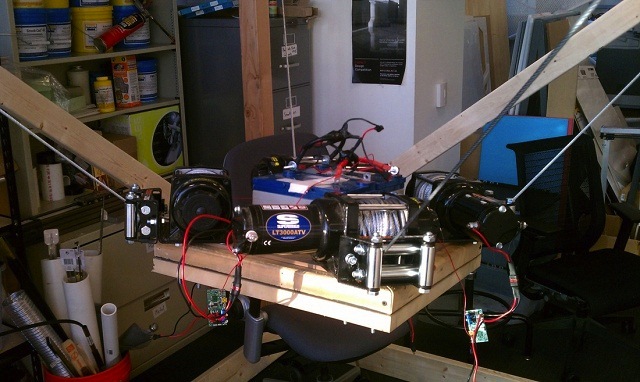Ben Peters – an MIT student studying new fabrication techniques at the Media Lab’s Mediated Matter group – is responsible for developing an interesting 3D printing project called Spiderbot. Ben’s objective is to break down the boundaries set by conventional 3D printers’ x and y-axis and the solid hardware frame in order to create 3D objects with the aim of using it for very large scale operations – such as on construction sites, when building houses or other facilities.
The initial inspiration for Ben’s project was the Skycam – a wire-supported, remotely operated camera system. Following in Skycam’s footsteps, the Spiderbot also operates by connecting the mainframe’s wiring to high stable points on the site. Due to this arrangement the movement of the machinery is less limited and thus mimics its namesake from the animal world – that of a spider.

Due to the potentially fast pace of building structures with the Spiderbot, the tech could also prove to be very useful in natural and other disaster sites, where the fundamental need for shelter needs to be addressed as soon as possible.
Want to see what else Ben has been working on? Then head to the source link for more information on his research and other intriguing engineering projects.
Source: Bengineering


